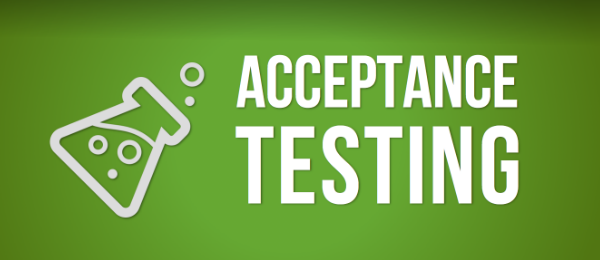Les actualités du Dimanche 04 septembre 2016 dans les métiers du web - Marmits.com - Reims
Test-driven development (TDD) has been a pretty decent standard in software development for the past years. Writing solid unit tests is something every professional developer should do. (Nightly) builds execute these tests all in order to validate the quality of your code. But for those of you that know the testing pyramid from Mike Cohn, will also know there are more tests than unit tests.
This article will show you the first step into Acceptance test-driven development (ATDD) to test the UI-layer of the application you're building. It might help you get your business requirements in focus to make sure that what you're building is right.

This article is the first part about this subject and I'll post the next updates in the upcoming weeks. If you want to hear me speak about this subject, feel free to join my "Turn specs into high quality apps"-presentation at TechDaysNL 2016.
 Le budget est au cœur du fonctionnement de tout Etat. C’est particulièrement vrai dans les pays africains qui ont besoin de maitriser leur budget en exécution pour faire face aux aléas de leurs ressources budgétaires liés aux variations du cours des matières premières.
Le budget est au cœur du fonctionnement de tout Etat. C’est particulièrement vrai dans les pays africains qui ont besoin de maitriser leur budget en exécution pour faire face aux aléas de leurs ressources budgétaires liés aux variations du cours des matières premières.
I Quit Freelancing This Could Be Mozilla’s Next Logo Prismic.io: CMS Backend for your Websites 5 Design Jobs that won’t Exist in the Future CSS3 Spinners Adopt New Tech Before Everyone Else The 5 Best Apps for Freelance Designers Site Design: Wherecardsfall.com Material Design Compatible Curated Color […]

 La position 0 correspond à la Google Answer Box, c’est-à-dire l’encart de réponse directe que propose Google en haut de sa page de résultats. L’information est généralement issue d’un site internet dont le lien est indiqué sous l’information. Un vrai eldorado pour le SEO !
La position 0 correspond à la Google Answer Box, c’est-à-dire l’encart de réponse directe que propose Google en haut de sa page de résultats. L’information est généralement issue d’un site internet dont le lien est indiqué sous l’information. Un vrai eldorado pour le SEO !